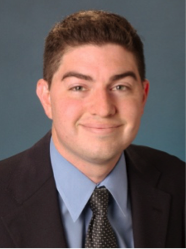Four trends changing the health insurance market
Several changes, from new payment models to the "Cadillac Tax," are impacting the health insurance market.

MedlinFor many health systems, hospitals, and physicians, the transformation from fee-for-service to fee-for-value has already begun. The introduction and growth of tailored networks, accountable care organizations, and other value-based programs into healthcare markets have given health plans and employers the tools they will need to be more effective in bending the cost curve, all while improving the patient’s outcome and experience.
With the implementation of the “Cadillac Tax” on the horizon, employers will be more aggressive in finding new solutions to avoid the penalty altogether; and for many employers, these efforts must begin now. Below are a few trends that will continue to change the insurance market:
1. Direct to employer contracting (provider to employer) and private insurance exchanges will continue to grow, but at a slow pace.
The proposed “Cadillac Tax” will continue to drive some employers into private insurance exchanges. However, many large employers will attempt to bend the cost curve and avoid the penalty by partnering with health plans and organized providers to create value networks. By doing this, large employers will be able to continue to control the benefits process, all while strengthening long-lasting relationships with the local providers. That said, if the provider community is unable to significantly reduce the healthcare spend, enrollment in private exchanges could accelerate more quickly with each passing year. Direct-to-employer opportunities will be more common, but on a limited basis.
2. High deductible PPO products will continue to grow at the expense of commercial HMO.
Employers are continuing to cost-shift to their employees through high-deductible PPO products. As a result, tailored networks will be more common as employers attempt to control benefit costs, while still offering the employees a desirable network (although products will incentivize selecting “value” providers). The ongoing implementation of the public exchanges and price sensitivity of the emerging Millennial generation will accelerate this trend. Commercial HMO enrollment will continue its slow decline as the product attracts more high acuity members, which in turn will increase the HMO spend per member beyond general inflation. This will likely make this product less attractive in the long term as the “Cadillac Tax” is implemented.
3. Large employers will continue to shape the patient experience.
Wellness programs, on-site clinics, telemedicine, healthy lifestyle are all on the interest list of many employers. Technology, ease of use, same day access, and pricing transparency will become a higher priority as Millennials continue to become a larger part of the workforce. In general, employers will continue to drive toward provider pricing transparency to allow their employees to take more ownership of their decisions as it relates to their health.
4. Medicare Advantage enrollment will continue to increase market penetration (as a percent of total Medicare beneficiaries).
This will occur as the Baby Boomer generation ages, and providers and health plans continue to improve the value proposition (lower costs and higher quality).
Adam Medlin is a senior manager with The Camden Group specializing in finance, managed care, and value-based payment models. He has extensive experience with hospitals, physician groups, managed care organizations, and health plans. Prior to rejoining The Camden Group, he served as the Director of Managed Care Integration at Daughters of Charity Health System. He can be reached at 714.263.8207 or amedlin@thecamdengroup.com.
In this episode of the "Meet the Board" podcast series, Briana Contreras, Managed Healthcare Executive editor, speaks with Ateev Mehrotra, a member of the MHE editorial advisory board and a professor of healthcare policy and medicine at Harvard Medical School. Mehtrotra is also a hospitalist at the Beth Israel Deaconess Medical Center in Boston. In the discussion, Contreras gets to know Mehrotra more on a personal level and picks his brain on some of his research interests including telehealth, alternative payment models and price transparency.
Listen
Doing More and Saving More with Primary in Home Care
September 1st 2021In this week’s episode of Tuning In to the C-Suite podcast, MHE Associate Editor Briana Contreras interviewed VillageMD’s Senior Medical Director of Village Medical at Home, Dr. Tom Cornwell. Dr. Cornwell discussed the main benefits of primary care at home, which includes the benefit of cost savings for patients, maintaining control of hospital readmissions and others. Dr. Cornwell also noted what has changed in the industry of at-home care and if there has been interest from payers like insurance companies and medicare in the service.
Listen